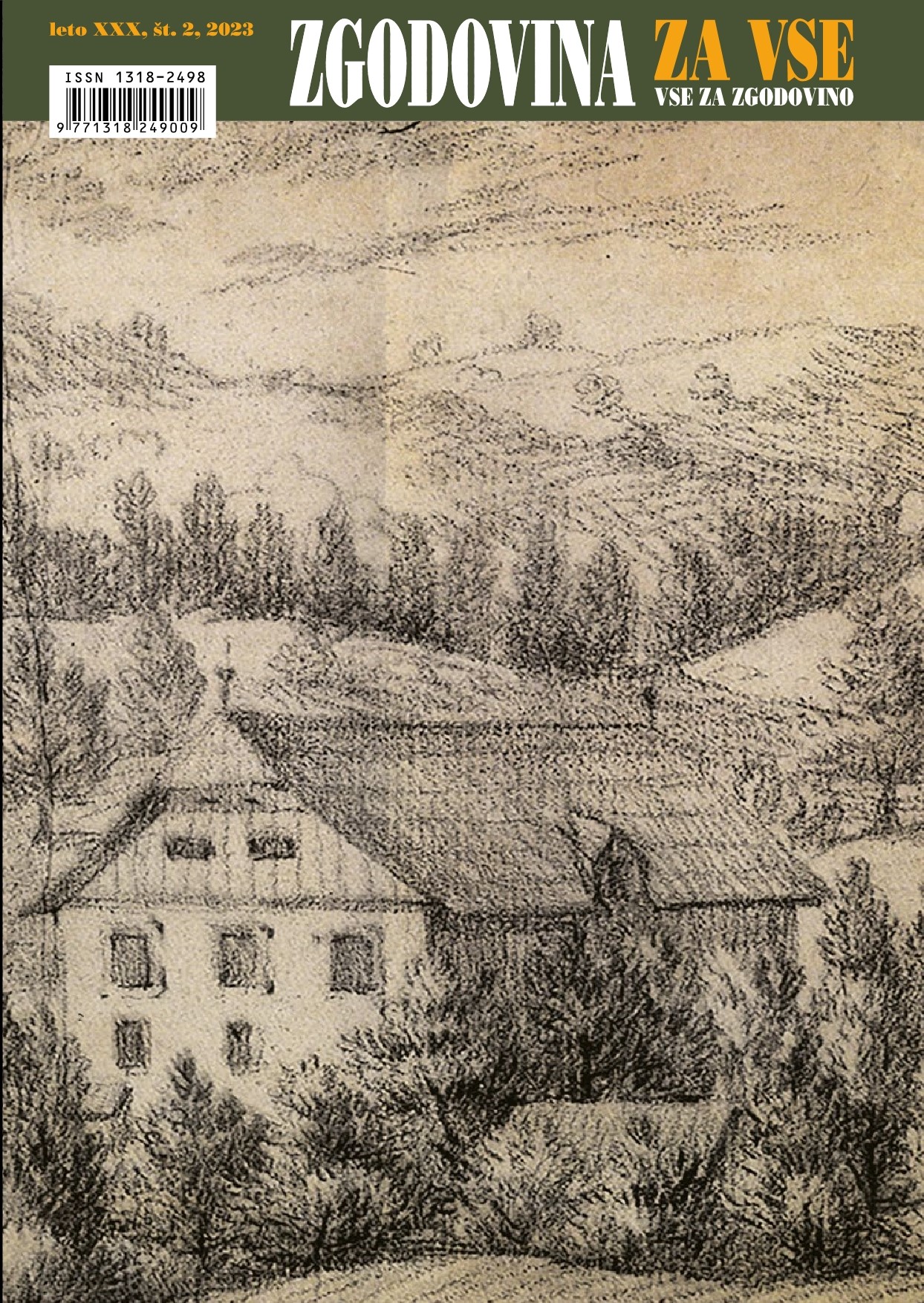Boris GOLEC
“AN OUTCAST” FROM THE VALVASOR FAMILY AND HIS TWO MORGANATIC MARRIAGES
Jurij Sigmund Valvasor (ca. 1618-1686/89), a member of the famous Carniolan noble family, from which the polyhistor Janez Vajkard descended, is one of the two Valvasors, of whom the polyhistor laconically wrote that they had emigrated from the country, and omitted their wives and children. Both of them had a morganatic marriage, Jurij Sigmund, as it turned out recently, even twice. Due to his (second) marriage to a peasant girl, his »dishonourable behaviour« and his emigration from Carniola, his relatives got the Land Estates of Carniola to deprive him and his descendants of the Land of Carniola privileges in 1657. Jurij Sigmund then lived on the estate of Count Zrinski in Croatia and for the most part in Carinthia, where he earned his living as a mining expert, and is said to have died in Deutschlandsberg in Styria.
Mojca ŠORN
MEDNO: FROM TOWN SWIMMING POOL TO CHILDREN’S RESORT
After the First World War, Ljubljana’s city officials began to think of an official bathing area to delight the bathers and bathers who spent their leisure time by the Sava River. At first glance, it seemed that a suitable location was found in Medno in 1929. The lease of the land or the construction of the bathing facilities has sparked a wideranging and heated debate between the supporters of the bathing facilities on the Ljubljanica river on the one hand and the supporters of the bathing facilities on the Sava river on the other. The minutes of municipal meetings, held by the Historical Archive of Ljubljana, provide insight into this. They also show that the high expectations of the Medno supporters were spoiled by the very low number of tickets sold, which led to the abandonment of the Sava baths in 1931. The municipality entrusted the (co-)management of the site to its social policy section, which has used it relatively successfully for children’s summer holidays for several years in a row.
Julija ŠULIGOJ
“THE BLIND PERSON’S MISERY IS EASED MOST BY CREATING THE CONDITIONS FOR HIM TO BE AS INDEPENDENT AS POSSIBLE.”
History of the Education of Blind and Partially Sighted Children in Slovenia at the Institute for the Blind and Partially Sighted in the 20th Century
The paper explores the history of the education of blind and partially sighted children in Slovenia. After presenting the beginnings of caring for blind soldiers, it follows the establishment of the institution on Slovenian soil and its development throughout the 20th century. The paper sheds light on the challenges and progress in the education of the blind and describes how the education of the blind took place, what subjects were taught, what aids were used and what was the tiflopedagogical approach in this regard. The text introduces some of the tiflopedagogues and their contribution to the functioning of the institution and highlights the institution’s central role in empowering blind individuals to lead independent lives and pursue diverse careers.
Gašper MITHANS
THE SUSPENSION OF THE CROATIANSLOVENIAN PARISH IN SAN FRANCISCO AND THE CHALLENGES OF ETHNIC CATHOLICISM IN THE UNITED STATES OF AMERICA
In recent decades, the United States has witnessed a marked crisis in the number of parishes providing pastoral care to European ethnic communities, because many of them have been forced to close or merge, usually due to a shortage of priests, declining attendance at services and financial reasons. This issue within American Catholicism is the focus of this article, which looks at the specific case of the parishioners of the Croatian-Slovenian Nativity of Our Lord Parish who resisted the closure of their church in 1994 and managed to reopen it two years later. This was a period of empowerment for American Catholics of Slovenian and Croatian descent in the San Francisco Bay Area, and an important achievement for the so-called traditional immigrant organisations, which were slowly losing the role of centres that they had once played among the much larger first-generation immigrant population.

